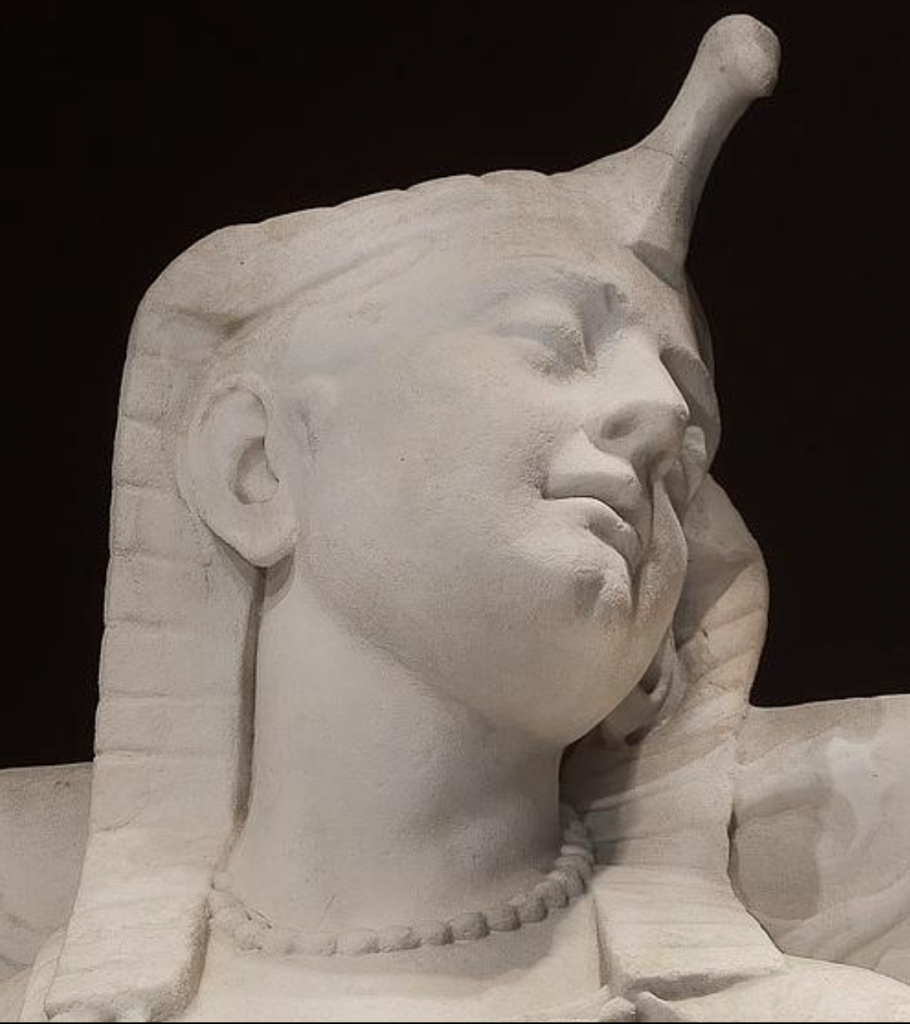
Througout this website, you’ll see public-domain images of Edmonia Lewis’ work. We are not sure how many sculptures Edmonia Lewis created. There are references to several dozen works, although not all of them have survived or been located. The sculptures that are known to have survived are scattered all over, some in museums, some in private collections, with the largest group of her works now in the Smithsonian American Art Museum. To this day, there is no complete visual catalog of Lewis’ work either in print or on line, but there are a couple of beautiful digital exhibits. You might expect a complete gallery here, but since this simple website cannot compete with professionally curated digital exhibits do not want to violate image copyright (the Smithsonian is generous about non-commercial use like this). So what follows are links to the best of these exhibits and a few stray others. That gives you a good start to explore on your own.
Here is the outstanding and lavishly produced Google Arts and Culture Exhibit, in collaboration with the Smithsonian, for a close curated look at some of the most important works by Lewis.
The Smithsonian American Art Museum has eight works by Lewis, including most famously the Death of Cleopatra, which they restored in the 1990s (see my post), but also her Hagar (1875) and one of sculptures featuring Native American themes from Longfellow, The Old Arrow-Maker (in two copies). There is also a portrait medallion by her of Wendell Phillips in the National Portrait Gallery. This “Spotlight” page for Lewis is a good starting place to see them all.
The Metropolitan Museum of Art has two small busts from 1868, Minnehaha and Hiawatha. Also see my Resources page for a beautiful Memory Palace podcast episode on these two.
Other collections, which typically only have one or two pieces by here, and often much less lavish funding have less impressive digital displays, or cannot currently create them for other reasons–Howard University, for example, does not have a good on-line display of Forever Free, and the Museum of African American History in Boston does not have one of Lewis’s marble bust of Robert Gould Shaw–although there is a 360 view of it on Google Arts and Culture. But even these less ambitious exhibits reveal the sometimes surprising locations of individual works–such as the two small marbles Awake and Asleep (and a bust of Lincoln) at the Public Library in San Jose, California, which were the end result of donations after Lewis’ two shows and auctions in California in 1873. Oberlin College where Lewis attended college before she left for Boston, now includes in their art collection a bust of James Peck Thomas (1874), Lewis’ only portrait bust of an African-American that has survived.
The only surviving outdoor sculpture by Lewis that we know of is the much-damaged, but recently conserved Hygeia on the grave of Dr. Harriot Kezia Hunt at Mount Auburn Cemetery in Cambridge, Mass. (Check out the September 2020 article about the history of this work on the Resource page.)
Your Turn:
If you clicked on any of the links, what sculpture(s) caught your eye? Why?
And: What is your preference: going off on your own, following the various links posted here, or reading summaries one one compact page? I am cucious because this is obviously a different approach to presenting you with the information from most other pages on this site, for example the Forever Free page, or that on Black artists of the 19th century. Which approach makes you more curious?